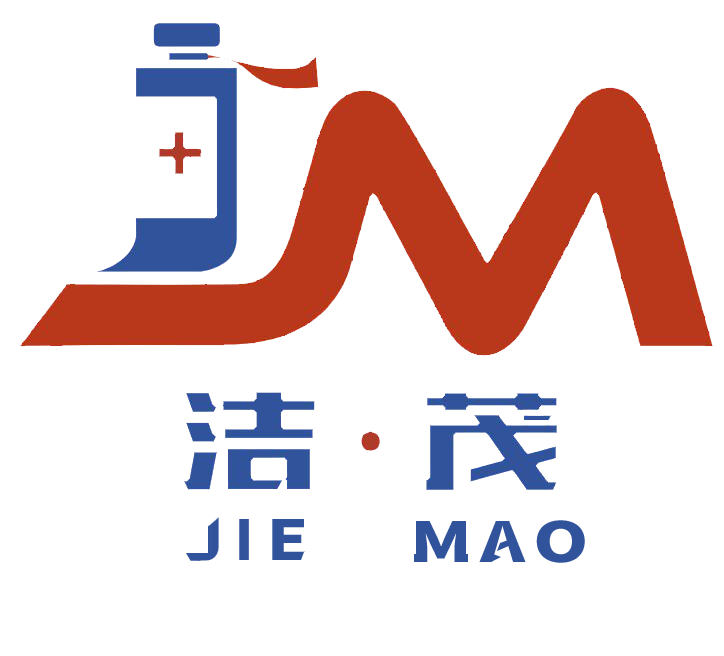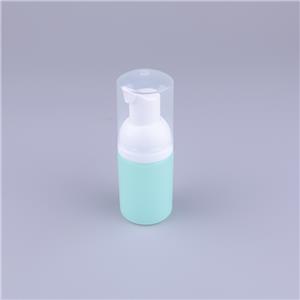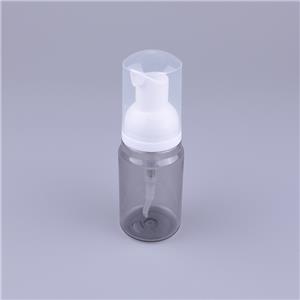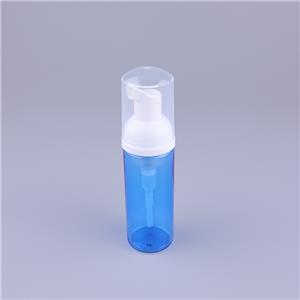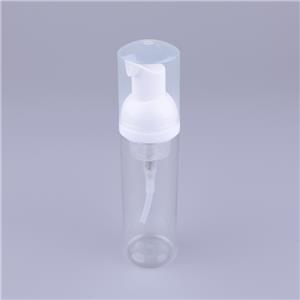- Home
- >
- News
- >
- Public Information
- >
- Three station plastic bottle production
Three station plastic bottle production
Three station plastic bottle production: efficient and precise modern molding technology
Against the backdrop of rapid development in the plastic packaging industry, the three station plastic bottle production technology, with its advantages of high efficiency, stability, and high degree of automation, has become the core process for large-scale plastic bottle manufacturing. This technology integrates the key processes of plastic bottle production into three collaborative workstations, achieving efficient conversion from raw materials to finished products through precise control of each step of the process. From daily beverage bottles to cosmetic packaging bottles, the three station production technology supports the diversified needs of the modern packaging market with its excellent molding quality and production efficiency, while constantly breaking through in environmental protection and intelligent upgrades.
1、 Technical definition and core advantages
Three station plastic bottle production is an automated production technology developed based on the principle of blow molding. The core is to integrate the key processes of plastic bottle manufacturing - preform pretreatment, stretch blow molding, and finished product demolding - into three continuous stations, and achieve process linkage through a rotating or linear conveyor system to form a closed-loop production process. Compared with traditional single station (single machine completes all processes) or dual station (separate pre-processing and forming), the three station technology greatly improves production efficiency and product consistency through process splitting and parallel operation.
Its core advantages are reflected in three aspects: efficiency is the most prominent feature, and the three stations can achieve a continuous production mode of "one in, one out". The production capacity of a single equipment can reach 3000-12000 bottles per hour, which is 2-3 times that of a single station equipment, especially suitable for large-scale production needs; Accuracy is achieved through independent control of each workstation. Parameters such as preform heating, stretching ratio, blow molding pressure, etc. can be individually adjusted to ensure uniform bottle wall thickness and high dimensional accuracy. The scrap rate can be controlled below 1%; Strong flexibility, by changing molds and adjusting parameters, plastic bottles with different capacities (50ml-2L) and shapes (round, square, irregular) can be produced to meet packaging needs in various fields such as beverages, cosmetics, and pharmaceuticals.
The three station technology is mainly suitable for the production of thermoplastic bottles such as PET (polyethylene terephthalate) and PP (polypropylene). PET, due to its high transparency and excellent mechanical properties, has become the main raw material for three station production and is widely used for packaging products such as bottled water, carbonated beverages, and fruit juice.
2、 Core workstation analysis and process flow
Each workstation in the production of three station plastic bottles undertakes a unique function, and each link is closely connected to jointly determine the final quality of plastic bottles. The complete process includes four stages: raw material preparation, preform supply, three station forming, and post-processing, with three station forming being the core.
First workstation: preform pretreatment
Pre treatment of preform is the foundation of plastic bottle molding, and the core task is to heat the prefabricated preform (injection molded tubular semi-finished product) to a suitable temperature for stretch blow molding, and ensure uniform heating. The preform is fed into the first station by the feeding mechanism and heated by a circular heating furnace or infrared heating module. The heating temperature needs to be strictly matched with the plastic material: the heating temperature of PET preforms is usually 90-120 ℃, at which point the material is in a high elastic state and has the best tensile performance; Due to the high melting point of PP preforms, the heating temperature needs to be increased to 130-160 ℃.
During the heating process, temperature uniformity is a key control indicator. If there is local overheating on the surface of the preform (exceeding the softening point of the material), it will cause wrinkles or uneven thickness of the formed bottle body; If the temperature is insufficient, the material has poor ductility and is prone to cracking when stretched. Therefore, three station equipment usually uses multi-stage infrared heating tubes, which are precisely controlled by programmable logic controllers (PLCs) to control the heating power in different areas. Combined with the preform rotation mechanism (speed 10-30r/min), it ensures that the circumferential temperature deviation of the preform is controlled within ± 2 ℃. In addition, cooling air needs to be introduced into the heating furnace to locally cool the bottle mouth of the preform, avoiding deformation of the bottle mouth due to high temperature and ensuring subsequent sealing performance.
Second workstation: stretch blow molding
Stretch blow molding is the core station that determines the shape and performance of plastic bottles. Through the synergistic effect of "mechanical stretching+high-pressure blow molding", the heated bottle blank is shaped into the target shape. The workstation consists of a stretching rod, a blow molding mold, and a high-pressure air source system. The workflow is divided into three steps: first, the mechanical stretching rod moves upward from the bottom of the bottle blank, stretching the bottle blank axially to the design length, with a stretching ratio of usually 1:2.5-1:4 (adjusted according to the height requirements of the bottle). Axial stretching aligns the molecular chains along the axial direction, improving the strength of the bottle body; Subsequently, high-pressure air (pressure 10-40 bar, adjusted according to the bottle shape) is injected into the preform through the central channel of the stretching rod or the mold air hole, causing the material to expand radially and adhere closely to the inner wall of the mold, achieving radial stretching. The radial stretching ratio is generally 1:3-1:5, and the radial molecular orientation further enhances the rigidity and barrier properties of the bottle body; Finally, hold the bottle for 1-3 seconds to shape it, with a holding pressure slightly lower than the blow molding pressure, to prevent size deviation caused by cooling shrinkage of the bottle.
Mold design directly affects the quality of bottle forming. The three station blow molding mold is made of high-strength aluminum alloy or steel, and the inner wall needs to be polished to mirror accuracy (Ra ≤ 0.02 μ m) to ensure a smooth and defect free surface of the bottle. The mold needs to be equipped with a cooling water circuit, which rapidly reduces the temperature of the bottle body from the molding temperature (about 100 ℃) to below 60 ℃ through circulating cooling water, accelerating the shaping process and shortening the molding cycle. For irregular shaped bottles (such as square or flat), the mold needs to be designed with an exhaust groove to avoid local material shortage caused by residual air during molding.
Third workstation: Finished product demolding and testing
The third workstation completes the tasks of demolding, preliminary inspection, and transportation of finished products, which is the final stage of the production process. After the blow molded plastic bottle is cooled and shaped, the mold is opened, and the demolding mechanism (ejector pin or suction cup) takes out the bottle body from the mold to avoid contamination or deformation caused by manual contact. The demolding process needs to be controlled with even force to prevent scratches or deformation of the bottle body, especially for thin-walled bottles (wall thickness ≤ 0.3mm), flexible suction cups need to be used for demolding.
After demolding, the three station equipment usually integrates an online detection module, which quickly detects the appearance defects of the bottle body through visual sensors, such as bottle mouth damage, bottle body scratches, deformation, black spots, etc. Unqualified products will be automatically removed to the waste channel. Qualified finished products are transported to the post-processing stage (such as bottle mouth trimming, labeling, and packaging) through conveyor belts. Some high-end equipment also detects bottle weight deviation (within ± 2%) and wall thickness distribution to ensure stable quality of each batch of products.
3、 Production equipment and core systems
The three station plastic bottle production equipment is the carrier of technological implementation, consisting of a main frame, a transmission system, three major station modules, and a control system. Each system works together to ensure continuous and stable production.
Host structure and transmission system
The main frame is made of welded steel structure and needs to have sufficient rigidity to avoid vibration during high-speed operation affecting the forming accuracy. The transmission system is the core of workstation connection, which can be divided into two types: rotary and linear. Rotary transmission is driven by servo motors to rotate the indexing plate. The three workstations are distributed along the circumference, and the indexing plate completes a workstation switch every 120 ° rotation. It is suitable for mass production of circular bottles, with a small equipment footprint and a speed of up to 600 bottles per minute; Linear transmission drives the worktable to move in a straight line through servo belts or chains, with three workstations arranged in a straight line, suitable for the production of irregular or large capacity bottles, and easy to replace and maintain molds. The speed is slightly lower than that of rotary transmission (about 400 bottles/minute). Both transmission methods must ensure positioning accuracy (± 0.1mm) to ensure precise docking between the preform and the workstation.
Core functional system
The heating system is the core of the first workstation, consisting of infrared heating tubes, reflective covers, and temperature sensors. Infrared heating tubes are divided into near-infrared (rapid heating) and far-infrared (uniform heating) according to wavelength, and are used in combination according to the material and thickness of the bottle blank; The reflector is made of mirror aluminum material, which improves the heat utilization rate to over 80%; The temperature sensor (accuracy ± 1 ℃) provides real-time feedback on the heating temperature and adjusts the heating power through PID algorithm to achieve closed-loop control.
The blow molding system provides power for the second workstation, consisting of an air compressor, a dryer, a high-pressure air storage tank, and a proportional valve. Compressed air needs to be dried (dew point ≤ -40 ℃) to avoid moisture affecting the transparency of the bottle body; High pressure gas storage tank ensures stable gas source pressure (fluctuation ≤± 0.5bar); The proportional valve can accurately adjust the blow molding pressure and holding time to meet the molding needs of different bottle shapes.
The control system is the "brain" of the equipment, using industrial PLCs (such as Siemens and Mitsubishi) combined with touch screens to achieve automation control. The operator can set process parameters (heating temperature, stretching speed, blow molding pressure, etc.) through the touch screen, and the system displays real-time information such as the operating status, production capacity statistics, and fault alarms of each workstation. High end equipment also supports remote monitoring and parameter optimization, and uploads production data to the cloud through the industrial Internet to achieve collaborative management of multiple equipment.
4、 Raw material selection and process control
The quality and efficiency of three station plastic bottle production largely depend on the precise matching of raw material characteristics and process parameters, requiring full process control from raw material selection to parameter optimization.
Requirements for raw material characteristics
The three station production uses PET as the main raw material and has strict requirements for the performance of PET slices: the intrinsic viscosity (IV value) needs to be controlled within 0.72-0.85dL/g. A high IV value can lead to poor melt flowability and uneven thickness of the bottle during blow molding; If the IV value is too low, the strength of the bottle body is insufficient and it is prone to damage. The crystallinity should be ≤ 5%. Low crystallinity ensures uniform softening of the preform during heating, avoiding a decrease in transparency caused by crystalline particles. In addition, PET slices need to pass food contact safety certifications (such as FDA, GB 4806.6) to ensure that heavy metals, volatile compounds, and other indicators meet standards. Especially for beverage and cosmetic bottles, strict control of acetaldehyde content (≤ 1ppm) is required to avoid affecting the flavor of the contents.
For PP plastic bottles, copolymer PP (block or random copolymer) should be selected, which has better impact strength (≥ 20kJ/m ²) and temperature resistance (heat deformation temperature ≥ 80 ℃) than homopolymer PP, and is suitable for containing hot filled beverages. PE material is mostly used for large capacity bottles (such as 2L or more), and medium density PE (MDPE) should be selected to balance rigidity and impact resistance.
Key process parameter control
The optimization of process parameters is the core of ensuring product quality and requires dynamic adjustment for different bottle shapes: at the first workstation, the heating time (10-30 seconds) needs to be matched with the production speed, and the heating power distribution needs to be adjusted according to the shape of the bottle blank - the power in the bottle mouth area decreases (to avoid softening), and the power in the bottle body area increases (to ensure uniform heating). The stretching and blow molding parameters of the second workstation are the most critical. The stretching speed (100-300mm/s) needs to be coordinated with the blow molding pressure. If the speed is too fast, it can easily cause the preform to break, while if it is too slow, the molecular orientation will be insufficient; The blow molding pressure needs to be adjusted according to the bottle type. Carbonated beverage bottles need to withstand internal pressure (≥ 2 bar), and the blow molding pressure needs to reach 30-40 bar, while ordinary water bottles can be reduced to 10-20 bar.
Cooling parameters are equally important. The temperature of the mold cooling water should be controlled at 15-25 ℃, with a uniform flow rate (± 5%) to ensure rapid cooling and shaping of the bottle body. For thick walled bottles (wall thickness ≥ 0.5mm), it is necessary to extend the cooling time or lower the water temperature to avoid shrinkage and deformation of the bottle body due to insufficient cooling.
5、 Quality Control and Common Problem Solving
The production of three station plastic bottles requires the establishment of a full process quality control system, which combines prevention and detection to ensure that the products meet the standards.
Quality Inspection Standards and Methods
Finished product inspection needs to cover three major categories of indicators: appearance, size, and performance. Appearance inspection is carried out through visual sensors or manual sampling, requiring the bottle body to be free of damage, scratches, bubbles, black spots, and the bottle mouth to be smooth without burrs; Dimensional inspection includes bottle height (± 0.3mm), bottle mouth diameter (± 0.1mm), and bottle body perpendicularity (≤ 1 °), achieved through laser caliper or coordinate measuring instrument; Performance testing includes drop testing (no damage from a 1.2-meter drop), pressure testing (carbonated beverage bottles must withstand an internal pressure of ≥ 3bar for 30 seconds without leakage), and barrier testing (oxygen permeability ≤ 0.1cc/day per bottle) to ensure that the product meets usage requirements.
Process testing is equally important, and it is necessary to conduct regular spot checks on the heating uniformity of the preform (temperature distribution detected by infrared thermal imager) and the wall thickness distribution after stretching and blow molding (deviation ≤ 10% detected by ultrasonic thickness gauge), in order to promptly detect process abnormalities.
Common problems and solutions
Common problems in production can be solved through process adjustments: uneven thickness of the bottle body is often caused by uneven heating or asynchronous stretching and blow molding. It is necessary to adjust the heating power distribution or calibrate the action timing of the stretching rod and blow molding valve; The deformation of the bottle mouth is usually caused by insufficient cooling of the bottle mouth at the first workstation, and it is necessary to increase the cooling air volume of the bottle mouth or reduce the heating power in the corresponding area; The appearance of white mist on the bottle body may be due to insufficient blow molding pressure or insufficient mold cooling. It is necessary to increase the blow molding pressure or lower the mold water temperature; Difficulty in demolding is often due to residual oil stains in the mold cavity or insufficient demolding angle. It is necessary to regularly clean the mold or optimize the demolding slope (≥ 1 °).
6、 Application Fields and Development Trends
The three station plastic bottle production technology, with its advantages of high efficiency and stability, is widely used in the packaging field and continuously upgraded under the drive of environmental protection and intelligence.
Main application areas
In the beverage industry, three station technology is the mainstream production method for bottled water, carbonated beverages, and fruit juice. It can produce standard bottles of 500ml-2L and reduce material consumption through lightweight design (reducing the weight of a single bottle to 9-12g); The cosmetics industry utilizes its high-precision molding advantage to produce 10-100ml shaped bottles (such as flat bottles and oval bottles), which are combined with surface printing or coating processes to enhance the appearance and texture; The pharmaceutical industry uses dedicated three station equipment to produce medicinal plastic bottles, which must comply with GMP standards to ensure a clean production environment (Class 8 or above). The raw materials used are medical grade PET or PP to avoid contamination of the drug solution by dissolved substances.
development trend
Environmental protection is the core direction. On the one hand, we promote the use of recycled PET raw materials (rPET) and use chemical recycling technology to make the performance of recycled PET similar to that of raw materials. Currently, some enterprises have achieved a blending ratio of recycled materials of over 30%; On the other hand, developing lightweight bottle shapes through structural optimization (such as corrugated bottle body design) can reduce weight while maintaining strength and reducing plastic consumption.
Intelligent upgrade acceleration, equipment will integrate AI visual inspection system, achieving defect recognition accuracy of ≥ 99.9%; Build a virtual production model through digital twin technology, simulate the optimization effect of process parameters in advance, and shorten the debugging time; The application of energy management systems can reduce energy consumption by 10-15%, which meets the requirements of green production.
Multi functional integration has become a trend, and in the future, three station equipment may integrate functions such as bottle mouth thread forming and surface treatment (such as plasma etching) to reduce subsequent processes; Develop rapid mold changing technology (mold changing time ≤ 10 minutes) to meet personalized needs and achieve small batch and multi variety production.
The three station plastic bottle production technology has become a benchmark process for modern plastic packaging production through process optimization and automation integration. The precise control from raw materials to finished products ensures quality while improving efficiency, supporting the diversified demands of the packaging market. With the application of environmentally friendly materials and the integration of intelligent technology, three station technology will play a more important role in green manufacturing and efficient production, promoting the sustainable development of the plastic packaging industry. </hint># Three station plastic bottle production: efficient and precise modern molding technology
Against the backdrop of rapid development in the plastic packaging industry, the three station plastic bottle production technology, with its advantages of high efficiency, stability, and high degree of automation, has become the core process for large-scale plastic bottle manufacturing. This technology integrates the key processes of plastic bottle production into three collaborative workstations, achieving efficient conversion from raw materials to finished products through precise control of each step of the process. From daily beverage bottles to cosmetic packaging bottles, the three station production technology supports the diversified needs of the modern packaging market with its excellent molding quality and production efficiency, while constantly breaking through in environmental protection and intelligent upgrades.
1、 Technical definition and core advantages
Three station plastic bottle production is an automated production technology developed based on the principle of blow molding. The core is to integrate the key processes of plastic bottle manufacturing - preform pretreatment, stretch blow molding, and finished product demolding - into three continuous stations, and achieve process linkage through a rotating or linear conveyor system to form a closed-loop production process. Compared with traditional single station (single machine completes all processes) or dual station (separate pre-processing and forming), the three station technology greatly improves production efficiency and product consistency through process splitting and parallel operation.
Its core advantages are reflected in three aspects: efficiency is the most prominent feature, and the three stations can achieve a continuous production mode of "one in, one out". The production capacity of a single equipment can reach 3000-12000 bottles per hour, which is 2-3 times that of a single station equipment, especially suitable for large-scale production needs; Accuracy is achieved through independent control of each workstation. Parameters such as preform heating, stretching ratio, blow molding pressure, etc. can be individually adjusted to ensure uniform bottle wall thickness and high dimensional accuracy. The scrap rate can be controlled below 1%; Strong flexibility, by changing molds and adjusting parameters, plastic bottles with different capacities (50ml-2L) and shapes (round, square, irregular) can be produced to meet packaging needs in various fields such as beverages, cosmetics, and pharmaceuticals.
The three station technology is mainly suitable for the production of thermoplastic bottles such as PET (polyethylene terephthalate) and PP (polypropylene). PET, due to its high transparency and excellent mechanical properties, has become the main raw material for three station production and is widely used for packaging products such as bottled water, carbonated beverages, and fruit juice.
2、 Core workstation analysis and process flow
Each workstation in the production of three station plastic bottles undertakes a unique function, and each link is closely connected to jointly determine the final quality of plastic bottles. The complete process includes four stages: raw material preparation, preform supply, three station forming, and post-processing, with three station forming being the core.
First workstation: preform pretreatment
Pre treatment of preform is the foundation of plastic bottle molding, and the core task is to heat the prefabricated preform (injection molded tubular semi-finished product) to a suitable temperature for stretch blow molding, and ensure uniform heating. The preform is fed into the first station by the feeding mechanism and heated by a circular heating furnace or infrared heating module. The heating temperature needs to be strictly matched with the plastic material: the heating temperature of PET preforms is usually 90-120 ℃, at which point the material is in a high elastic state and has the best tensile performance; Due to the high melting point of PP preforms, the heating temperature needs to be increased to 130-160 ℃.
During the heating process, temperature uniformity is a key control indicator. If there is local overheating on the surface of the preform (exceeding the softening point of the material), it will cause wrinkles or uneven thickness of the formed bottle body; If the temperature is insufficient, the material has poor ductility and is prone to cracking when stretched. Therefore, three station equipment usually uses multi-stage infrared heating tubes, which are precisely controlled by programmable logic controllers (PLCs) to control the heating power in different areas. Combined with the preform rotation mechanism (speed 10-30r/min), it ensures that the circumferential temperature deviation of the preform is controlled within ± 2 ℃. In addition, cooling air needs to be introduced into the heating furnace to locally cool the bottle mouth of the preform, avoiding deformation of the bottle mouth due to high temperature and ensuring subsequent sealing performance.
Second workstation: stretch blow molding
Stretch blow molding is the core station that determines the shape and performance of plastic bottles. Through the synergistic effect of "mechanical stretching+high-pressure blow molding", the heated bottle blank is shaped into the target shape. This workstation consists of a stretching rod, blow molding mold, and high-pressure air supply system. The workflow is divided into three steps: first, the mechanical stretching rod moves upward from the bottom of the bottle blank, stretching the bottle blank axially to the design length, with a stretching ratio of usually 1:2.5-1:4 (adjusted according to the bottle height requirements). Axial stretching orients the molecular chains along the axial direction
